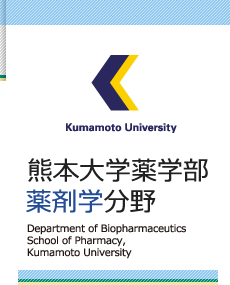Toxinsに論文が掲載されました。(尿毒素インドキシル硫酸によるmTORC1活性化を介した腎線維化分子機構)
Indoxyl Sulfate Contributes to mTORC1-Induced Renal Fibrosis via The OAT/NADPH Oxidase/ROS Pathway.
Activation of mTORC1 (mechanistic target of rapamycin complex 1) in renal tissue has been reported in chronic kidney disease (CKD)-induced renal fibrosis. However, the molecular mechanisms responsible for activating mTORC1 in CKD pathology are not well understood. The purpose of this study was to identify the uremic toxin involved in mTORC1-induced renal fibrosis. Among the seven protein-bound uremic toxins, only indoxyl sulfate (IS) caused significant activation of mTORC1 in human kidney 2 cells (HK-2 cells). This IS-induced mTORC1 activation was inhibited in the presence of an organic anion transporter inhibitor, a NADPH oxidase inhibitor, and an antioxidant. IS also induced epithelial-mesenchymal transition of tubular epithelial cells (HK-2 cells), differentiation of fibroblasts into myofibroblasts (NRK-49F cells), and inflammatory response of macrophages (THP-1 cells), which are associated with renal fibrosis, and these effects were inhibited in the presence of rapamycin (mTORC1 inhibitor). In in vivo experiments, IS overload was found to activate mTORC1 in the mouse kidney. The administration of AST-120 or rapamycin targeted to IS or mTORC1 ameliorated renal fibrosis in Adenine-induced CKD mice. The findings reported herein indicate that IS activates mTORC1, which then contributes to renal fibrosis. Therapeutic interventions targeting IS and mTORC1 could be effective against renal fibrosis in CKD.
Keywords: AST-120; chronic kidney disease; indoxyl sulfate; mTORC1; renal fibrosis.
年月別
- 2022年2月
- 2022年1月
- 2021年12月
- 2021年11月
- 2021年10月
- 2021年9月
- 2021年8月
- 2021年7月
- 2021年6月
- 2021年5月
- 2021年4月
- 2021年3月
- 2020年12月
- 2020年11月
- 2020年10月
- 2020年8月
- 2020年7月
- 2020年5月
- 2020年4月
- 2020年3月
- 2020年1月
- 2019年11月
- 2019年10月
- 2019年9月
- 2019年8月
- 2019年7月
- 2019年5月
- 2019年1月
- 2018年11月
- 2018年9月
- 2018年6月
- 2018年5月
- 2018年4月
- 2018年3月
- 2018年2月
- 2017年12月
- 2017年11月
- 2017年10月
- 2017年8月
- 2017年7月
- 2017年6月
- 2017年5月
- 2017年4月
- 2017年3月
- 2017年2月
- 2016年12月
- 2016年11月
- 2016年9月
- 2016年8月
- 2016年7月
- 2016年6月
- 2016年5月
- 2016年4月
- 2016年3月
- 2015年12月
- 2015年10月
- 2015年9月
- 2015年8月
- 2015年7月
- 2015年6月
- 2015年5月
- 2015年2月
- 2014年12月
- 2014年11月
- 2014年10月
- 2014年9月
- 2014年8月
- 2014年7月
- 2014年6月
- 2014年5月
- 2014年4月
- 2014年3月
- 2014年2月
- 2014年1月
- 2013年12月
- 2013年11月
- 2013年10月
- 2013年8月
- 2013年7月
- 2013年6月
- 2013年5月
- 2013年4月
- 2013年2月
- 2013年1月
- 2012年11月
- 2012年10月
- 2012年7月
- 2012年5月
- 2012年4月
















